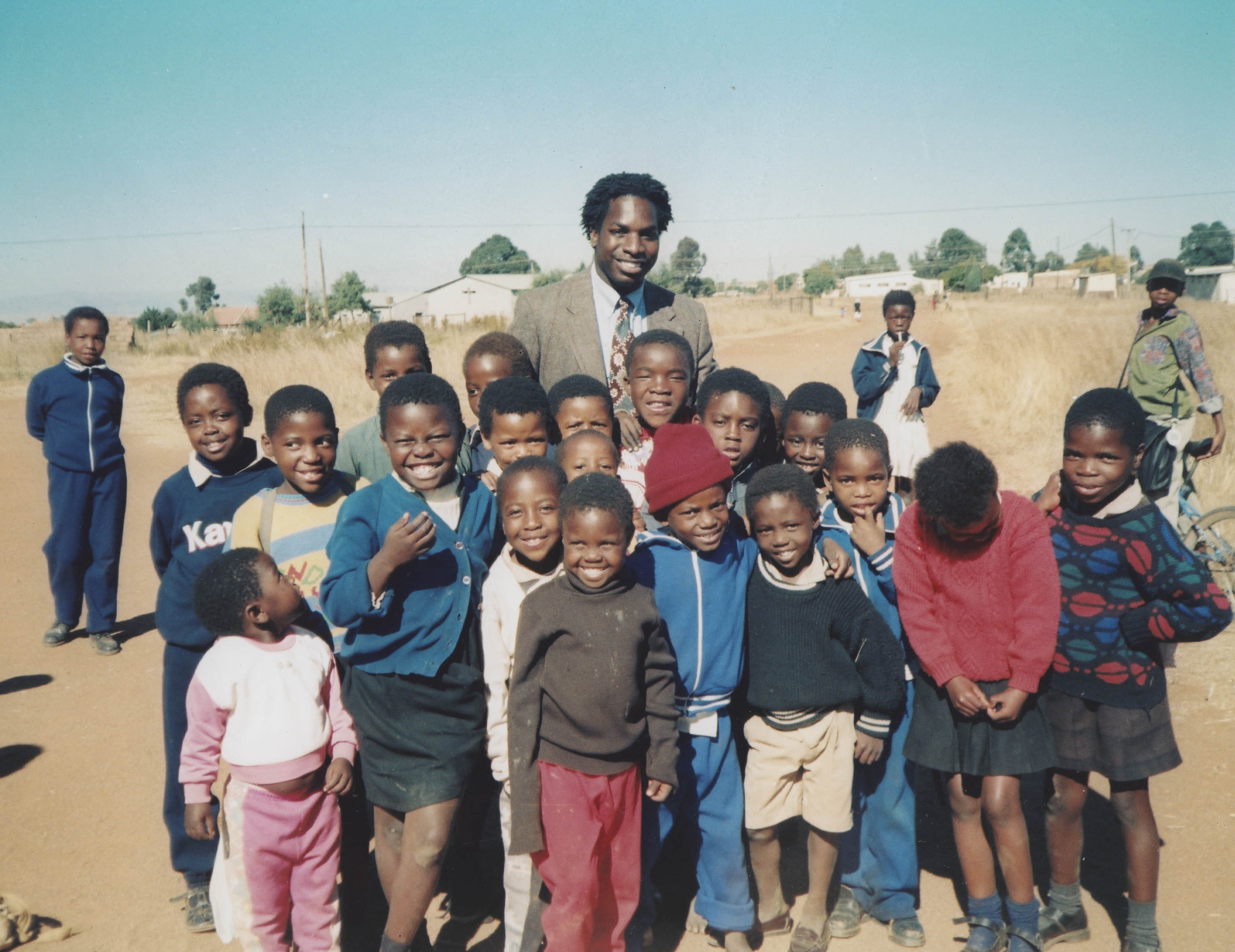
Ed. Note: In October 1994, Presidents Bill Clinton and Nelson Mandela met to seal a bond of friendship and a promise to work together to transform South Africa from a divided nation to one united by its commitment to build a democratic, nonracially based society. The Peace Corps was a small but important part of that agreement. Today there are 152 Peace Corps Volunteers in South Africa working in the fields of education and NGO development.
As long as I can remember, I have aspired to live and work in Africa. As a young African American growing up, I wrote anti-apartheid rap songs in high school, interned with an Africa advocacy group, and even shook Nelson Mandela’s hand at a reception during my junior year of college at Howard University.
While interning in Accra in 1994, I had the opportunity to meet Peace Corps Volunteers serving in Ghana. They were community leaders welcomed by Ghanian communities, communicating in local languages and sharing new ideas.
Once learning about Peace Corps service, I only had two thoughts: Why hadn’t I heard about this sooner? And: Where could I sign up? That year, President Mandela invited the Peace Corps to South Africa and asked for a Volunteer group that truly reflected the diversity of America.
In January 1997, the Peace Corps swore-in the first group of 35 Volunteers going to South Africa, and I was among them. The assignment for our group was in elementary school education, serving in South Africa’s Northern Province (now renamed Limpopo Province) as liaisons, advisors and trainers for local teachers. The goal was to help implement a new national education curriculum that offered parity among people and replaced the current curriculum, which was based on ethnicity, race, and color.
To better communicate with my community, I learned an African language, Northern Sotho. I took pride in learning a new language and culture, though it came with some frustration; I would inevitably be drawn into the same questions.
“Where are you from?”
“I’m from the States,” I’d reply.
“No, I mean where are you really from?”
“From the States,” I’d say again, this time more emphatically.
Then came looks of confusion and annoyance. Why, they wondered, would I deny my heritage and language? Surely I was African. They would try a new tack.
“Well, where are your parents from?”
And on and on it went.
These conversations of heritage and where I came from often led to discussions about slavery and the number of people of African descent in the United States. As I gave impromptu history lessons, I always mentioned the similarities I saw between South Africa and the United States and the struggle for racial equality. Exactly 40 years after Brown vs. Board of Education struck down “separate but equal” in the United States, apartheid was struck down with the first national multi-ethnic democratic election in South Africa’s history. In response to frustrations expressed that their personal circumstances hadn’t immediately changed, even though the government had, I would explain that slavery in America was followed by a reconstruction period and the civil rights movement.
I feel privileged to have played a small part in South Africa’s civil rights movement as it transitioned into a democracy, and I am grateful that the Peace Corps gave me this opportunity. As the Director of Intergovernmental Affairs and Partnerships at the Peace Corps, and a former staff member of the Office of Minority Recruitment at the Peace Corps, I continue to support Peace Corps’ efforts to ensure that Volunteers reflect the face of America and that everyone is provided with opportunity to serve.
C.D. Glin served in South Africa from 1997-1999 and currently, is the Director of the Office of Intergovernmental Affairs and Partnerships with the Peace Corps.


